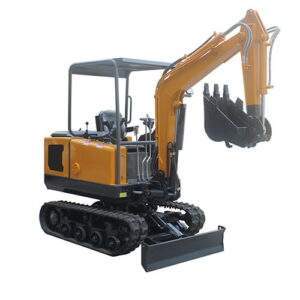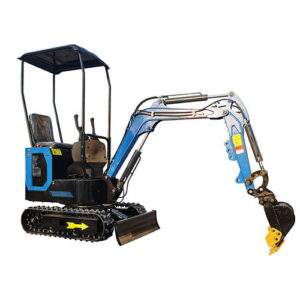Advanced Techniques for Professional Excavators
Introduction

Excavation is a foundational aspect of construction and infrastructure development, requiring specialized skills and techniques. Professional excavators are pivotal in preparing sites by removing earth and debris efficiently and safely. This blog delves into advanced techniques that can elevate the capabilities of professional excavators, emphasizing safety, precision, environmental stewardship, and technological innovation.
Safety First: Essential Practices for Professional Excavators
Safety is paramount in excavation work due to the inherent risks involved. Professional excavators must adhere to stringent safety protocols to protect themselves and others on site. Essential practices include:
- Personal Protective Equipment (PPE): Utilizing helmets, high-visibility clothing, gloves, and steel-toe boots to mitigate injuries.
- Trenching and Excavation Standards: Following OSHA (Occupational Safety and Health Administration) guidelines to prevent cave-ins and ensure proper shoring.
- Equipment Maintenance and Inspection: Regular checks of machinery to identify and address potential hazards.
- Emergency Preparedness: Developing evacuation plans and having rescue procedures in place.
Ensuring comprehensive safety measures not only safeguards workers but also enhances project efficiency by minimizing downtime due to accidents.
Precision Excavation: Techniques for Accuracy and Efficiency
Achieving precision in excavation is crucial to avoid damage to existing structures, utilities, and the environment. Advanced techniques that promote accuracy and efficiency include:
- GPS and Laser-Guided Systems: Using GPS technology and laser guidance systems to precisely control excavation depths and slopes, reducing manual errors.
- Non-Destructive Digging: Employing vacuum or hydro excavation methods to safely expose utilities without damaging them.
- Soil Analysis and Trench Shoring: Conducting soil tests to determine stability and implementing appropriate shoring techniques to prevent collapses.
- Backfilling and Compaction Strategies: Ensuring proper backfilling techniques and compaction to maintain soil stability post-excavation.
These techniques not only streamline operations but also contribute to cost savings and project timelines.
Environmental Responsibility in Excavation Projects
Professional excavators have a pivotal role in minimizing environmental impact during their operations. Key practices include:
- Erosion and Sediment Control: Implementing erosion control measures such as silt fences and sediment basins to prevent soil runoff into water bodies.
- Waste Management: Proper disposal and recycling of excavation waste materials in accordance with environmental regulations.
- Habitat Preservation: Taking measures to protect and restore local habitats affected by excavation activities.
- Compliance with Regulations: Staying abreast of environmental laws and regulations to ensure adherence and mitigate legal risks.
By integrating these practices, excavators can contribute to sustainable development and community goodwill.
Enhancing Efficiency: Technology and Innovation in Excavation
Technological advancements continue to revolutionize the excavation industry, enhancing productivity and precision. Innovative tools and practices include:
- Automated Excavation Machinery: Utilizing robotic arms and autonomous vehicles for repetitive tasks, reducing labor costs and improving safety.
- Telematics and Remote Monitoring: Monitoring equipment performance and operator behavior remotely to optimize fleet management.
- 3D Modeling and Simulation: Creating digital models of excavation sites for planning, visualization, and detecting potential issues before they arise.
- Advanced Material Handling: Using conveyor systems and material sorters to streamline the handling and sorting of excavated materials.
By embracing these technologies, professional excavators can stay competitive and meet increasingly complex project demands.
Case Studies and Best Practices
Examining real-world examples and best practices showcases the application of advanced techniques in various scenarios:
- Urban Excavation Challenges: Addressing space constraints and underground utility complexities in urban environments.
- Large-Scale Infrastructure Projects: Managing extensive excavation requirements for highways, bridges, and tunnels.
- Archaeological Excavation Methods: Employing meticulous techniques to preserve historical artifacts and sites.
- Integration with Construction Phases: Coordinating excavation activities with other construction stages to optimize project timelines and budgets.
Learning from successful projects underscores the importance of adapting techniques to specific project needs and conditions.
Comparison of Excavation Techniques

| Technique | Description | Benefits |
|---|---|---|
| GPS-guided excavation | Utilizes GPS technology for precise digging | Increases accuracy, reduces rework |
| Laser-guided excavation | Laser technology for depth and slope control | Ensures uniform grading, reduces errors |
| Non-destructive digging | Vacuum or hydro excavation methods | Minimizes utility damage, enhances safety |
| 3D modeling and simulation | Digital models for planning and visualization | Improves project planning, reduces risks |
Conclusion
Mastering advanced techniques is indispensable for professional excavators navigating today’s construction landscape. By prioritizing safety, precision, environmental stewardship, and technological innovation, excavators can enhance project outcomes while minimizing risks and costs. Continuous learning and adoption of best practices ensure that excavators remain at the forefront of industry standards and contribute to sustainable development goals.
FAQ
Q: What qualifications do I need to become a professional excavator?
A: Professional excavators typically require training in heavy equipment operation, safety certifications, and possibly a commercial driver’s license (CDL) depending on the jurisdiction.
Q: How can I improve my excavation efficiency?
A: Focus on continuous training, adopt modern excavation techniques and technologies, and prioritize thorough planning and site preparation.
Q: What are the main challenges in excavation work?
A: Challenges include navigating varying soil conditions, ensuring safety in trenching operations, and complying with environmental regulations.











